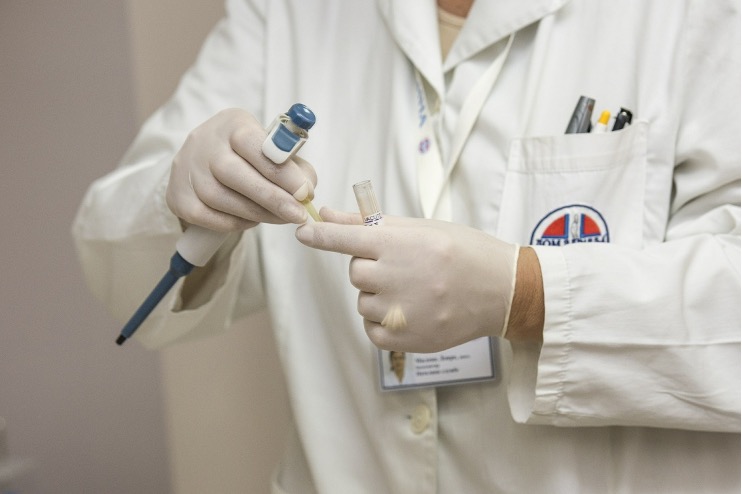
Disposable Sensors are handheld or portable scanning equipment used to monitor, diagnose, and treat patients. Basic vital indicators are monitored with these devices. For example, a compact handheld sensor could be positioned on the patient’s forehead to detect heart rate, breathing rates, blood oxygenation levels, pulse transmission time, temperatures, etc.
Disposable sensors are inexpensive and simple to use for single-shot or short-term measurements. Physical, chemical, or biological changes in their surroundings are converted into an analytical signal by them. This type of low-cost sensor allows anybody, anywhere, and at any time, to mine crucial analytical data without worrying about contamination or recalibration.
Why use Disposables?
The disposable medical devices sensors market has grown in popularity in recent years; the market has shown vertical expansion in recent decades, and this trend is projected to continue during the forecast period.
The expansion of this market can be attributed to a number of causes, including rising rates of hospital-acquired infections, rising healthcare costs, increased investments by venture capital firms to create novel disposable medical device sensors, and government funding for R&D.
However, issues such as onerous regulatory clearance procedures, as well as insufficient and irregular funding for these medical devices, may stifle progress.
The global market for disposable sensors has recently experienced tremendous growth also due to the increasing demand for testing at the point of need outside of conventional laboratories.
In medical diagnostics, food, and environmental monitoring, this is especially true. You are aware of various diagnostic sensors you can dispose of in daily lives, such as home pregnancy tests and wearable blood glucose meters.
The easy reconfiguration and assembly of mobile and disposable equipment allows for optimal process modification and increases the flexibility of the manufacturing site, which is no longer limited to one type of process.
Modular instrumentation that may be used for chromatography and filtration can provide additional flexibility and reduce the footprint of downstream processing.
Materials Used for Disposable Sensors
Despite recent developments in material science, disposable sensors’ vast range of uses makes it impossible to create a single one-size-fits-all material that meets all of their criteria. As a result, there is no ultimate material for disposable sensing devices aside from a specific application or a certain type of sensor.
For on-site testing applications, cellulose-based nonwoven materials, such as paper provide a simple and low-cost alternative. Due to their restricted stretchability, they are not appropriate for conformal wearable sensors.
MEMS/NEMS Standard Materials
MEMS sensors, such as gyroscopes, accelerometers, pressure sensors, chemo- and biosensors, can now be mass-produced on a huge scale and at a low-cost thanks to high-precision semiconductor manufacturing technology (originally developed for microelectronics).
Nano-electromechanical systems are emerging due to the present trend in shrinking, which leads to even smaller systems than MEMS.
Polymers Made of Synthetic Materials
In contrast to typical MEMS/NEMS materials, synthetic polymers are often affordable and enable both quick prototyping and large production at a low cost. A wide range of polymeric materials with various qualities, such as stretchability, transparency, and flexibility, are also accessible.
As a result, they’re frequently seen in disposable sensors. Elastomers, thermosets, and thermoplastics are the three types of synthetic polymers that can be found.
Materials Made of Cellulose
Cellulose is a biopolymer that can be employed in a variety of industrial applications. For almost two millennia, cellulose fibers have been produced and utilized to make cellulose paper (or simply paper). Paper is a desirable material for disposable sensors because of the following characteristics:
- Paper is low-cost and comes in a range of compositions.
- It is lightweight, flexible, and biodegradable.
- It is compatible with low-cost production processes like printing.
- Paper enables the manufacture of microfluidic structures may be folded into 3D shapes (origami), and allows for the integration of many functions (such as electronics) into a single device.
Disposable Technology’s Limitations
Stock
To provide uninterrupted procedures, a sufficient inventory of single-use material must be kept on-site to offset extended supplier lead times. A monopolistic situation could result from a supplier consolidation, putting users under economic pressure and requiring them to rely on a single source.
On the other hand, a huge inventory may not be utilized up over its shelf life, resulting in additional costs. Its stability and sterility determine the shelf life of plasticware.
Sanitization
Because the disposables arrive sanitized and ready to use, the end-user must rely on the supplier’s quality assurance. Re-sterilization of bigger assemblies on-site is frequently impractical due to the inapplicability of current procedures such as autoclaving or steam treatment.
Investment
As a result, a careful balance must be maintained between on-site storage, consumption, delivery, and lead times. The recurring cost of plastic ware and single-use consumables may eventually outweigh the initial capital investment savings.
There will also be costs associated with the trash handling of massive numbers of disposables.
All in all, disposable tools and technology are the present and future of medical diagnostics. The only question arises is whether it will be used judiciously.